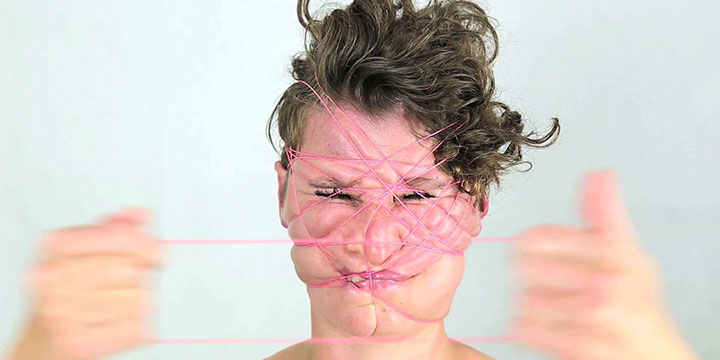The video works shown in Artemovendo present a morphology of ambiguous entities, creatures or technical devices. Natural environments are contrasted with artificial, fully computer-designed worlds. Sometimes it is difficult to distinguish whether we have been invited to take a look at the outside world or into a laboratory; even dimensions appear to be chosen arbitrarily. Or do we happen to be entering a microscopically small universe that has been magnified many times over?
What provides an associative point of departure of the show is a fascinating, paradoxical process of formation in nature, which has especially inspired artists like Daniel Steegmann Mangrané or Anke Röhrscheid. “Phasmes” is the French name of a species of insects, to which the French art historian Georges Didi-Huberman has devoted a brilliant short essay. The “Phasmids” or “ghost insects” are able to replicate other shapes, such as leaves or branches, with their anatomy and different forms of behaviour. While visitors to a vivarium may already have difficulty detecting well-camouflaged snakes and the like among the grass, branches or stones, and thus visually separating them from their surroundings, Phasmids make this altogether impossible, as they take on the properties of the environment in which we are trying to find them. As visitors of Artemovendo, we enter into a world of continual metamorphoses, in which precise observations of nature merge with spatial utopias derived from science fiction. It remains ambiguous whether we are being shown an interior or an exterior world, or whether the two are morphing into each other in a “phasmidial” process of formation.
The basic character of many works in the show is one of a poetic quality which is linked to the tradition of romanticism: Both are marked by a longing for nature and meticulous scientific observation, by mystical immersion and a narrative delight in detail. Abstract systems of virtually crystalline severity are just as conceivable as the dissolution of all defined contours in atmospheric descriptions of state. The representation of emotional states is explored through a broad range of material qualities. One could speak of a heightened sensitivity towards “states of matter”. The term “states of matter” refers to various temperature- and pressure-dependent physical states of materials. We differentiate between the basic properties of solid, liquid and gaseous, with solid and liquid also being subdivided into “crystalline” and “amorphous”. Changes of state occur for instance through melting, solidification, freezing, evaporation and condensation.
In Artemovendo, analogue and digital video art will present not only a broad range of issues and queries, but also touch upon various suggested states of matter, thus addressing the ambiguity between organic and artificial substance, and space.
text: Ludwig Seyfarth
Works on blinkvideo:
- Neil Beloufa, "Kempinski" 2007
- Sandra Boeschenstein, "Besuchte Linie auf Granit" 2014
- Nezaket Ekici, "Blind" 2007
- Yuri Firmeza, "NOTHING IS" 2014
- Alex Hanimann, "Shifting" 2003
- Luzia Hürzeler, "L’occhio del Pantheon" 2008
- Daniel Jacoby, "Cuculí" 2008
- Maik and Dirk Löbbert, "MDL Video Merano" 2008
- Stefan Panhans, "Noch ein Sportstück" 2015
- Anke Röhrscheid, "Apperception" 2013
Goethe Institut Porto Alegre




































